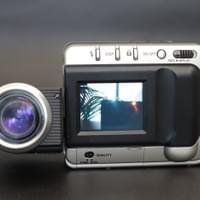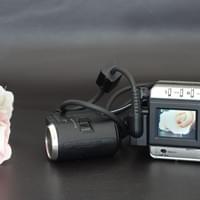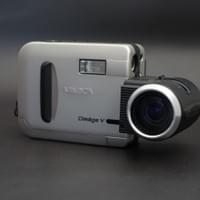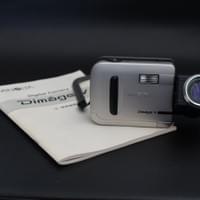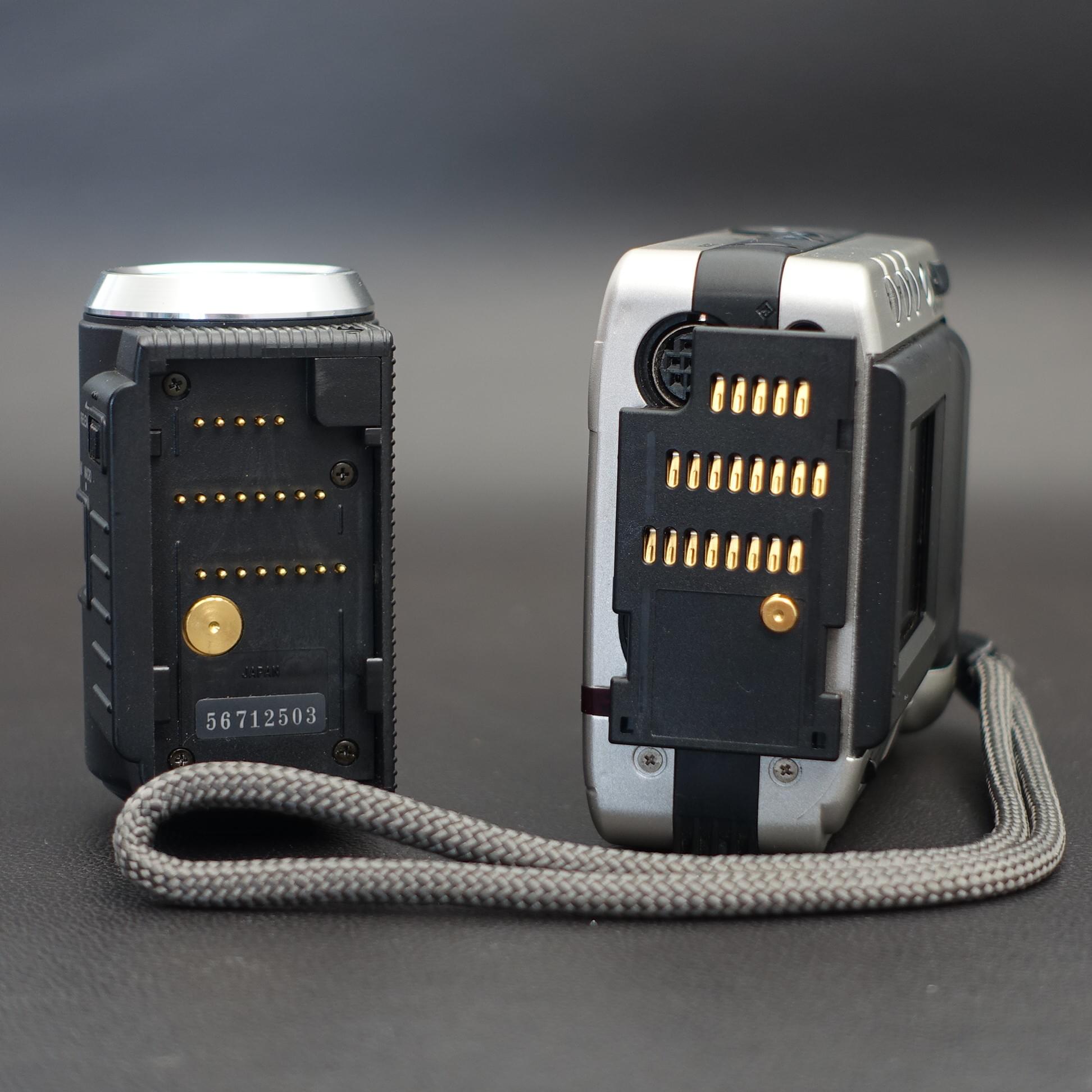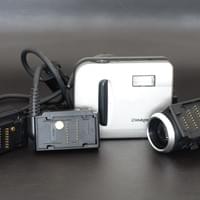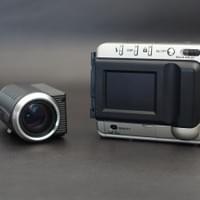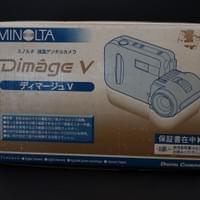
Minolta RD-175 (1995)
I’m so pleased to show you this 1995 ‘digitalised’ SLR complete with all its accessories and in perfect operating condition.
The RD-175 was a joint venture of Minolta of Japan and Afga of Germany, apparently intended to compete with the very expensive Kodak/Nikon/Fujix digitalised SLRs of the time. (I apologise for creating the word ‘digitalised’, but it does neatly describe these early modified SLR film cameras.)
Each company marketed a version of this camera – Afga's is called the ActionCam and Minolta's the RD-175. Minolta described its version as a 'reflex digital' camera, hence the 'RD'. The '175' signifies the resolution of 1.75 megapixels.
The modification made by Agfa/Minolta to the base film camera, the Minolta Maxxum 500si Super, was the minumum possible. There is no digital photo information, no additional controls and no monitor.
The companies did do something fancy with the sensor arrangement, however. To keep costs down, they used three small inexpensive sensors, each of 1.5 megapixels. They then introduced a prism arrangement that splits the light into three paths to these three sensors. The digital image is combined from these three sources.
Unfortunately, the amount of light that is lost by this arrangement is considerable. The maximum effective aperture of the camera is f/6.7 regardless of the aperture setting of the lens being used. To compensate for the loss of light reaching the sensors, the ISO rating is fixed at a higher-than-standard 800.
Another notable feature is the 131mb PC card. It's a Type III PCMCIA ATA Card which is a PCMCIA card modified with a piggybacked hard drive.
Isn’t it fascinating to think of the effort that went into cobbling together this remarkable piece of invention?
The price in 1995? About €8,000.
Minolta Dimage V (1996)
This collection contains some highly unusual devices, but the Dimage V is not only a stand-out camera, it can do what none of the others can.
For 1996, the 0.35 megapixel CCD sensor, the shutter speed up to 1/10,000 sec and SmartMedia card storage were advanced. The lens also swivels, a useful feature that later disappeared from digital cameras. Overall, the camera is nicely finished.
But the unique feature of the Dimage V is its ability to come apart. The lens mechanism detaches from the body and re-attaches via an electronic "lanyard". Thus reconnected, the lens can be positioned in any odd place and angle. The special lanyard is now a very rare accessory. My photos show one attached to my camera.
I guess that many original owners of the Dimage V bought it only for the purpose of taking an otherwise impossible shot using the lens on a lanyard.
David Leith © 2025











